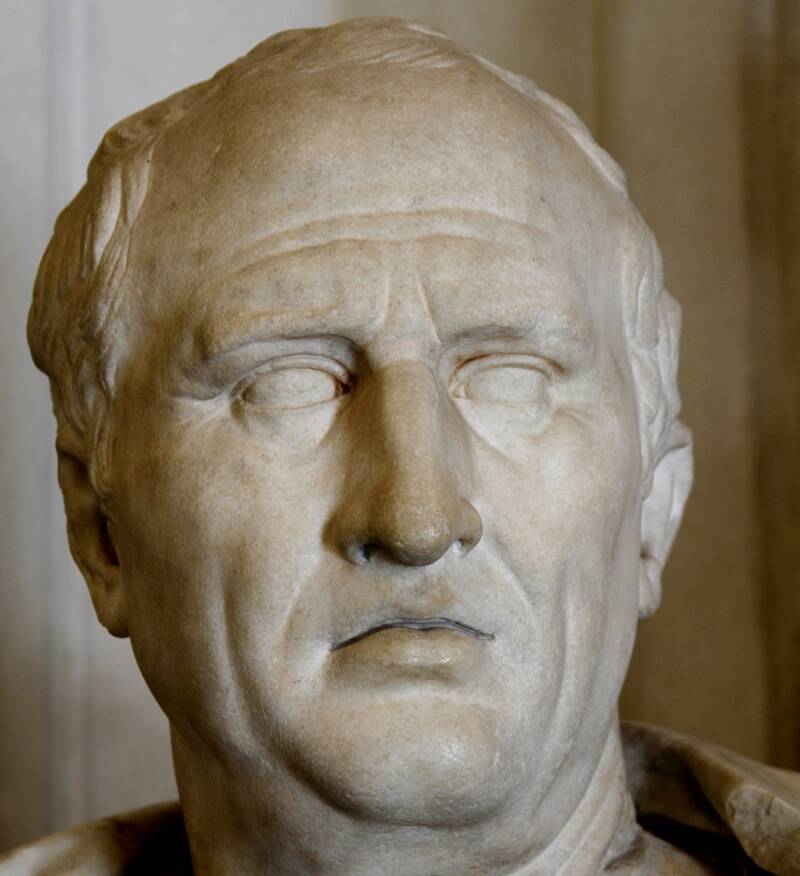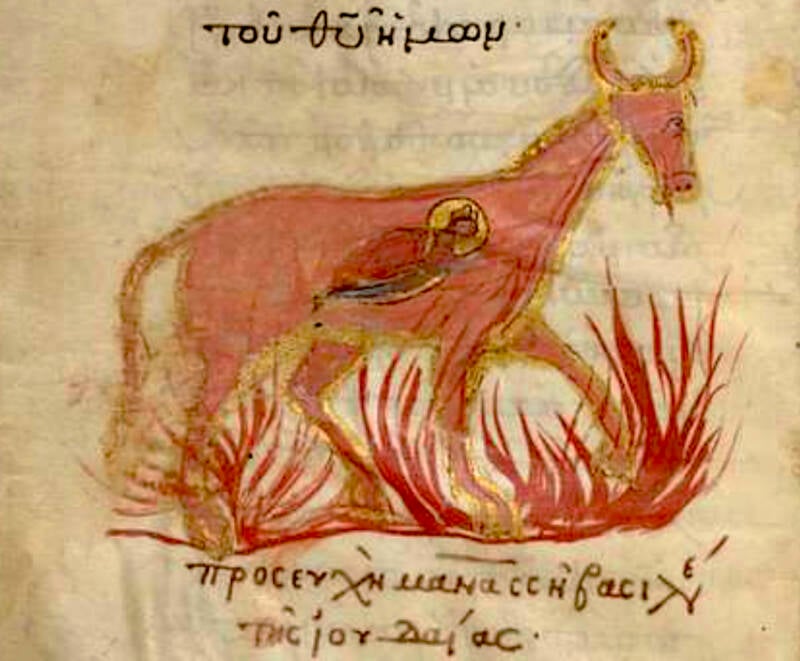Made of brass, iron, or bronze, the Brazen Bull torture device of ancient Greece was supposedly used to roast victims to death, transforming their screams into the sound of a bull.

FlickrA depiction of the alleged ancient Greek torture device known as the brazen bull in the Torture Museum in Bruges, Belgium.
The Brazen Bull, also known as the Bronze Bull, was a brutal torture and execution device allegedly used in ancient Greece.
Created in the 6th century B.C.E., it was designed to be a particularly gruesome method of capital punishment. The device was a hollow brass statue, crafted to resemble a real bull, in which victims were placed before a fire was lit beneath it. The metal would, naturally, become extremely hot, causing the person inside to suffer a painful death.
To add insult to injury, the Brazen Bull was specifically designed to amplify the screams of its victim as they burned alive. Due to the acoustic apparatus, those screams sounded, to a listener, like the deep bellowing of a bull.
Calling it a spectacle would be an understatement.
How The Brazen Bull Was Allegedly Invented By Phalaris And Perilaus
Like many ancient torture devices, it’s difficult to actually verify whether the Brazen Bull had ever actually been put to practice. That said, there are still ancient records that speak to the Brazen Bull’s existence and the legend of its creation.

Wikimedia CommonsWhen victims were placed inside the brazen bull, their screams were allegedly transformed by the torture device into the sound of a bull.
As the story goes, around 560 B.C.E. in the seaside colony of Akragas (modern-day Sicily), there was a tyrannical ruler by the name of Phalaris. Phalaris’ realm was wealthy and lovely, but the cruel ruler commanded it with an iron fist.
Perilaus, the court sculptor, approached Phalaris one day with the concept for the Brazen Bull, proposing it as a means to execute condemned prisoners — and provide a deterrent spectacle for the populace. It was effectively a melodic torture device.
Perilaus’ statue was a brass cast of a bull, hollow inside, with a door on one side through which a victim could be placed in the statue. Once the door was sealed, a fire would be lit underneath the bronze bull. The metal would then heat up, causing a slow and truly agonizing death for the person inside.
Additionally, the device was engineered to convert the screams of the suffering victim into sounds that were eerily similar to the bellowing of a bull, thanks to a complex system of tubes and stops.

Wikimedia CommonsPhalaris allegedly had Perilaus design the brazen bull torture device, but its existence remains uncertain to this day.
Perilaus intended for this form of execution to not only serve as a punishment but also as a warning to others, as the physical torment was compounded by the psychological terror of the execution. Perilaus believed this method — transforming the victim’s screams into a bullish yell — would please the ruthless and cruel ruler.
However, the story goes that Phalaris, upon hearing the proposal and seeing the bull, was horrified not by its cruelty but by Perilaus’ inventiveness in devising such a torment.
To test the device, Phalaris ordered Perilaus to enter the bull and demonstrate the sound mechanism. Once Perilaus was inside, Phalaris ordered a fire lit beneath the bull, subjecting Perilaus to the very torture he had devised.
According to some accounts, before Perilaus could die from the heat, Phalaris had him removed and then thrown off a hill, executing him in a less inventive manner.
But again, like many stories from antiquity, the truth about the Brazen Bull is hard to verify.
Was The Bronze Bull Of Phalaris A Real Torture Device Or Just A Myth?

YouTubeA depiction of how the Brazen Bull worked.
Famed poet and philosopher Cicero recalled the Brazen Bull as fact, and as proof of a cruel ruler’s viciousness in his series of speeches In Verrum: “… which was that noble bull, which that most cruel of all tyrants, Phalaris, is said to have had, into which he was accustomed to put men for punishment, and to put fire under.”
Cicero later used the symbol of the Brazen Bull to represent Phalaris’ cruelty, and wondered if his people may have fared better under foreign dominion rather than be subject to their own ruler’s brutality.

Wikimedia CommonsFamed Roman statesman Cicero spoke of the Brazen Bull as a real torture device in ancient Greece, but historians remain not fully convinced.
“…[To] consider whether it was more advantageous to the Sicilians to be subject to their own princes, or to be under the dominion of the Roman people when they had the same thing as a monument of the cruelty of their domestic masters, and of our liberality.”
Of course, Cicero was a political operator and often used his speech to paint Phalaris as a villain. Fellow historian Diodorus Siculus wrote that Perilaus remarked:
“If you ever wish to punish some man, O Phalaris, shut him up within the bull and lay a fire beneath it; by his groanings the bull will be thought to bellow and his cries of pain will give you pleasure as they come through the pipes in the nostrils.”
Diodorus’ Phalaris asked Perilaus to demonstrate his meaning, and when he climbed in the Brazen Bull, Phalaris had the artist shut in and burned to death for his loathsome invention.

PicrylKnown as the Brazen Bull of Phalaris, this rumored torture device could be made of iron, bronze, or brass.
Mentions of the Brazen Bull appeared in the works of other ancient writers including Pindar and Lucretius, which could lend some level of historical credence to its existence. Their accounts, among others, describe the Brazen Bull being used in public executions, but modern historians have cast doubt on the story.
In particular, the legend of the Brazen Bull’s creation contains numerous elements of classical myths and legends, especially poetic justice, lessons about hubris, and irony. Perilaus being the Brazen Bull’s first victim, for example, is a classic example of irony, and many consider the story to be an allegory or embellishment of Phalaris’ cruelty.
Moreover, there has never been any archaeological evidence that the Brazen Bull existed in ancient Greece, nor was it depicted in ancient art. That said, a lack of physical evidence does not necessarily serve as proof that the Brazen Bull existed — it simply means that no physical evidence can confirm that it did.
Whether evil tyrant or vigilante leader, one thing is clear: Phalaris and his Brazen Bull make a story for the ages.
After reading about the horrifying Brazen Bull, learn about some more torture devices like the rat torture method. Then look inside the declassified C.I.A. torture manual from the Cold War.





